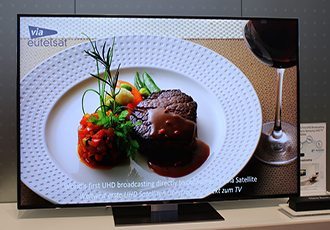 To accommodate the proliferation of devices and services in the home, including over the top (OTT) and UltraHD, service providers’ networks are in varying states of upgrades, but the demands placed on them are only going to escalate.
To accommodate the proliferation of devices and services in the home, including over the top (OTT) and UltraHD, service providers’ networks are in varying states of upgrades, but the demands placed on them are only going to escalate.
Operators are continuously trying to forecast and manage bandwidth requirements and a report from Rethink Research, and sponsored by MoCA, found that a home with three TVs (common in the US, though not necessarily in all other countries), each with UHD capability, plus three additional video streams on smaller screens will have a minimum requirements of 85Mbps. The minimum requirement for a home network in this scenario is three UHD streams at 25Mbps each, three portable device streams 2.5Mbps each, with the additional 5Mbps for “other” activity-together this represents a “peak” home environment for Internet traffic.
“Home networks need to cope with peak loads generated by streaming to and from multiple devices, general increases in Internet traffic in and to the home, the emergence and adoption of UHD-formatted content, increase home automation and emergence of the Internet of things and advertised WAN or network access speeds, all at the same time,” said Peter White, Rethink Research founder.
Even though international use patterns are about two years behind the US, data requirement will rise to 171Mbps by 2019, the report found.
This is the benchmark for operators – or should be, as they assess the performance and reliability of the various home networking standards under real-world conditions.
For those looking to stream video at home, despite the fact that a router like the motorola mb8600 modem
can handle the high speeds on offer, it should be noted that there’s considerable variation between some of the published and validated speeds.
“Our report highlights the need for operators to look at actual performance and reliability before designing their networks,” said White. “As this report demonstrates, the validated performance data of home networking standards can vary markedly from advertised rates.”
This article was originally published at http://www.rapidtvnews.com/.
